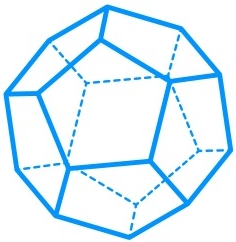Solid figures
Solid figures, also called solid shapes, are three-dimensional figures that have length, width and height. See some examples of three-dimensional figures below.
A prism is a polyhedron with exactly two faces that are congruent and parallel. These faces are called bases.
Other faces of the prism are called lateral faces. Some examples of prisms are rectangular prisms, triangular prisms, pentagonal prisms, hexagonal prisms, etc....
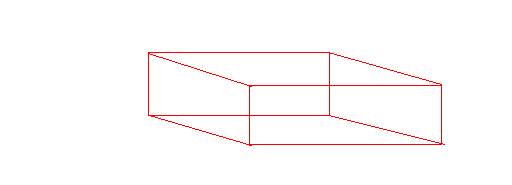 Rectangular prism
Rectangular prismA polyhedron is a three-dimensional figure whose surfaces are polygons.
A rectangular prism is shown above. Notice that the rectangular prism is made of two parallel faces that are polygons. These parallel faces are rectangles in this case and they are congruent. Looking at the figure, the bases are the top and bottom base.The other four faces are called lateral faces.
A triangular prism is shown below. It is a prism with two triangular faces that are congruent. The other three faces are rectangles and they are called lateral faces.
 Triangular prism
Triangular prismA cube is also a prism with congruent squares as bases (or sides) and lateral faces. The difference between a cube and a rectangular prism is that you can pick anything as your two faces since all the faces are congruent. The following figure is a cube.
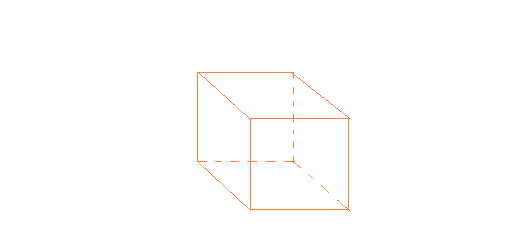 Cube
CubeA pyramid is a polyhedron in which one face, also called the base, can be any polygon. The other faces, also called lateral faces or triangular sides, are triangles that meet at a common vertex. The following figure is a square pyramid. However, a pyramid could be a pentagonal pyramid if the base is a pentagon or a hexagonal pyramid if the base is a hexagon.
 Pyramid
PyramidA cone has a circular base connected to a vertex. Suppose the base of a pyramid is a regular polygon. You can turn the pyramid into a cone by continuously increasing the number of sides of the base of the pyramid. The following figure is a cone.
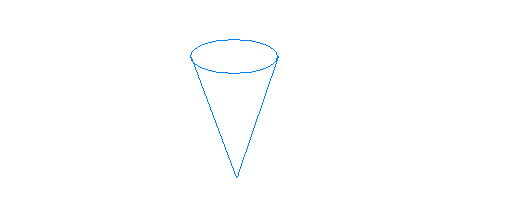 Cone
ConeA cylinder has two congruent or equal circular bases that are parallel.The following figure is a cylinder.
 cylinder
cylinderA sphere is a figure with a curved surface in which all points on the surface are equal distance from the center. Because a sphere is round, it could be a little hard to accept that it has 3 dimensions. Here is how to look at it. If a sphere did not have 3 dimensionless, then it will be flat just like a rectangle.The following figure is a sphere.
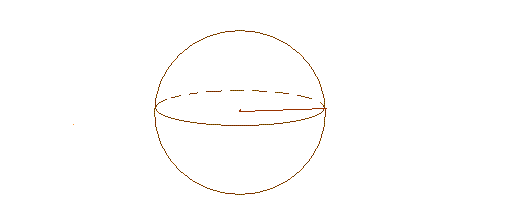 Sphere
SphereHere are some real-life examples of solid figures
Earth, marbles and soccer balls are examples of spheres.
Soda cans, candles, and paint cans are examples cylinders.
Ice cream cones, traffic cones, and carrots are examples of cones.
The Rubik's cube and ice cubes are examples of cubes.
The Egyptian pyramids are examples of pyramids.
A stick of butter, a laptop, refrigerators, and cereal boxes are examples of rectangular prisms.
Other interesting examples of solid figures
These solid figures are specifically called platonic solids or regular polyhedra. Just like a regular polygon whose sides are all equal, all faces of a regular polyhedron are equal. There are five platonic solids!
- Tetrahedron
- Cube
- Octahedron
- Icosahedron
- Dodecahedron
A tetrahedron, also called triangular pyramid, is a platonic figure that has four faces. All four faces are equilateral triangles. Notice that the tetrahedron has a triangular base. The following figure is a tetrahedron.
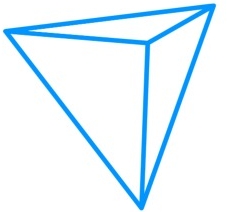 tetrahedron
tetrahedronA cube is a platonic figure that has four equal faces. All four faces of a cube are squares. The following figure is a cube.
 Cube
CubeAn octahedron is a platonic figure that has eight equal faces. All eight faces of an octahedron are equilateral triangles and the octahedron is called regular octahedron. Notice that to create an octahedron, you just need to join the bases of two equilateral square pyramids. The following figure is an octahedron.
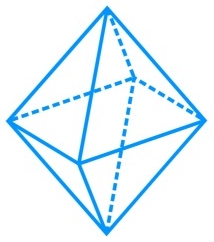 octahedron
octahedronAn icosahedron is a platonic figure that has twenty faces. All twenty faces of an icosahedron are equilateral triangles. The following figure is an icosahedron.
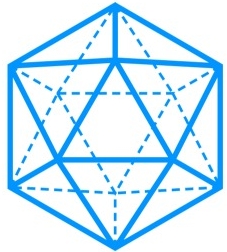 icosahedron
icosahedronA dodecahedron is a platonic figure that has twelve faces. All twelve faces of a dodecahedron are pentagons. The following figure is an dodecahedron.
